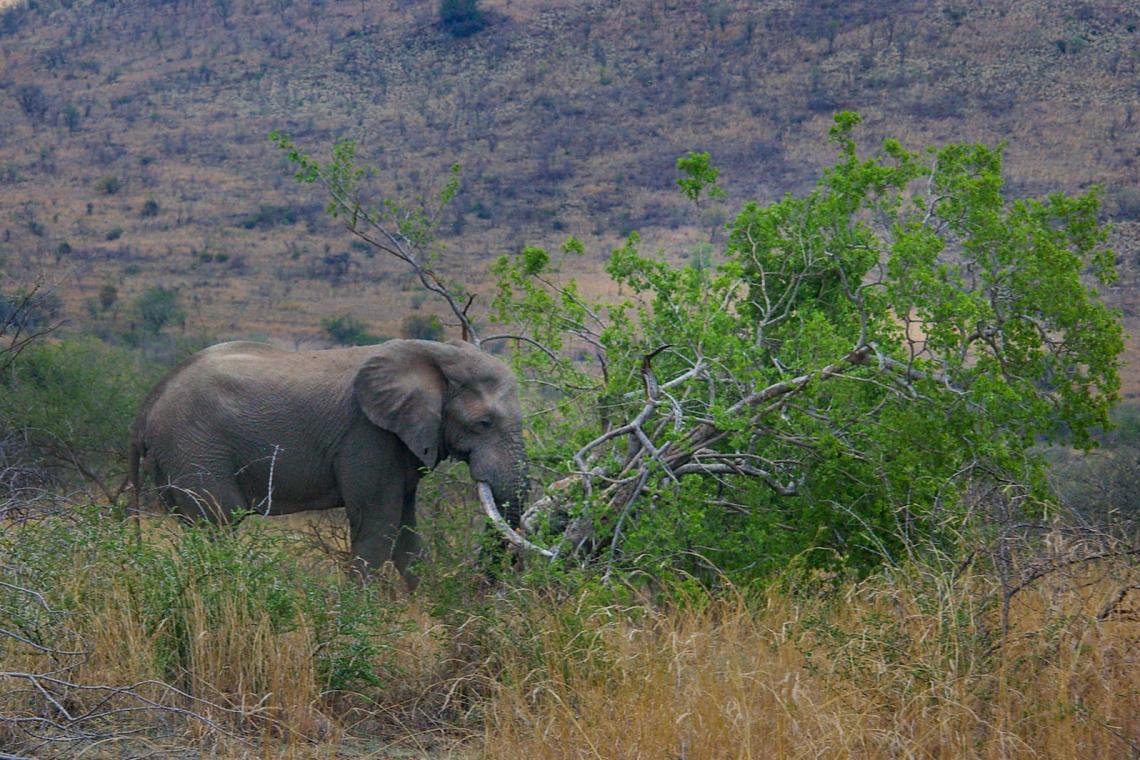A study at the Singita private concession in the Sabi Sand shows positive results in testing wire mesh collars for trees to reduce mortality due to elephant ringbarking.
Mesh has thus far been installed on some 2,500 trees since the initiative's launch in 2021. The project came about in response to elephant behaviour, not limited to stripping bark from trees but also breaking branches, uprooting saplings, and upending adult trees. Where left unchecked, trees over widespread areas do not recover.
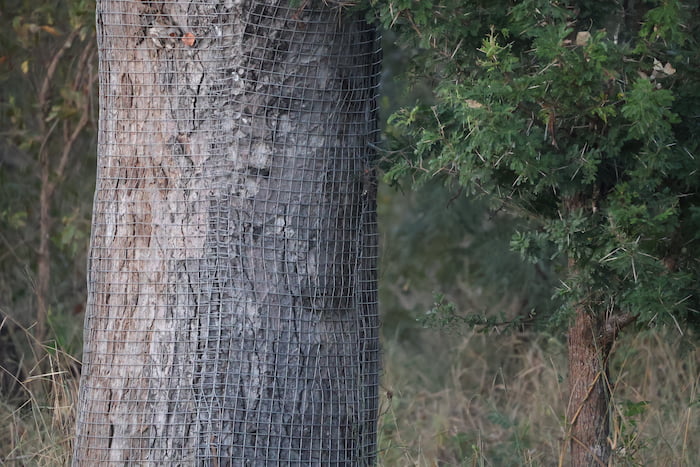
The most successful wrapping for the trees has been found to be galvanised weldmesh.
During the dry winter months, when the availability of nutritious plant material declines, elephant damage can be more prevalent.
Ecologists manage this impact in various ways, including opening and closing waterholes to encourage elephants to move to less affected areas.
In places such as Sabi Sand, however, water is relatively plentiful due mainly to the presence of the eponymous rivers. Water has also become even more abundant because of micro-catchment rehabilitation, especially on Singita’s concession, where work spearheaded by Chief Ecologist Dave Wright has been underway for several decades.
This has made Sabi Sand Nature Reserves attractive to elephants, which can move freely within the primarily fenceless Greater Kruger National Park area.

Trees pushed over often continue growing and are less of a concern.
“What we’re hoping to do at Singita is protect the seed bank of certain populations of trees,” says Singita Sabi Sand Environmental Manager Jacques Rousseau. Knobthorn (Acacianigrescens) and marula (Sclerocarya birrea) trees have been especially hard hit.
Wright also initiated the tree-wrapping initiative that began on 5,600 ha. The same year, Kruger National Park released its most current wildlife survey, recording the elephant population at 28,000 individuals.
The wrapping is carried out by just a handful of people and targets selected areas and vulnerable species.

Elephant at Singita Sabi Sand.
Like the widespread technique of protecting trees against the onslaught of porcupines in landscaped gardens, trees are wrapped in wire mesh from knee height to a height of some 2m, depending on the tree's shape. While the mesh hugs the trunk, a series of loops and other installation techniques allow the collar to expand as the tree grows.
Various mesh types have been attempted, with the most successful being 50x50mm x 1.6mm galvanised weldmesh, commonly known as Bafana Wire. It offers malleability and strength at a workable cost.
Once trees are identified, they are measured, and their details – height, circumference, and the wire used – are recorded. A rating scale denotes the scale of damage a tree might have sustained from pachyderms.
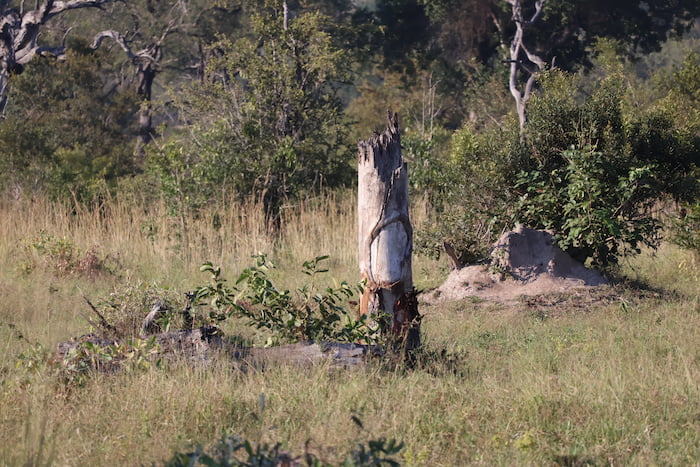
Some trees snap when pushed.
“This is done to supply us with demographics on our tree populations so that we can make further inferences on the population,” Rousseau says.
Sometimes, a tree sealant is applied to the exposed cambium and sapwood layers to assist recovery and protect against further opportunistic attack from insects and disease.
The team's first prize is to prevent further damage to a tree and to prevent the stem from drying out, as these individuals are more prone to being snapped by elephants, ultimately killing the tree. Trees that are uprooted are less of a concern when their roots are not completely exposed. They can often continue transporting nutrients along the stem, continuing its life cycle.
Furthermore, collared trees are tagged to indicate the date and area of installation. Their GPS coordinates are logged and plotted on a map.
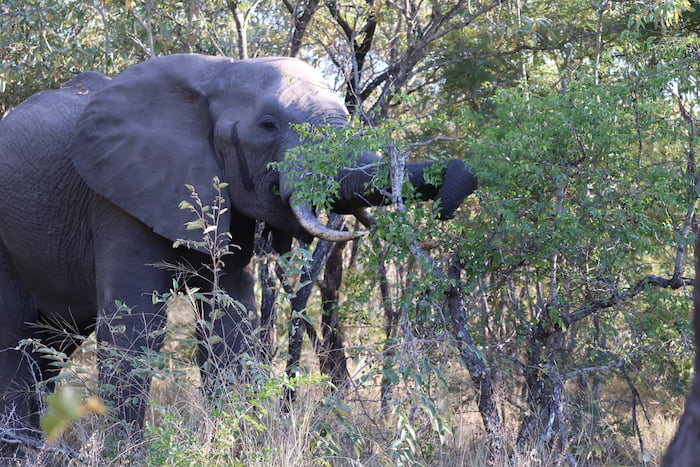
Elephants move freely between the Kruger National Park and its adjoining reserves.
“It’s not without its challenges,” says Rousseau. “Not only are you operating in an area with predators, occasionally someone enters an erroneous co-ordinate, and we have to go out and physically search for the missing tree.
“This happens during our annual follow-up. We do it to validate the data on new trees that have been wrapped as well as monitor trees that have already been validated.”
Singita’s conservation mission and long custodianship of the land have also proven valuable. The team has aerial photographs of the land dating back to the 1940s, which provide insights on changes to vegetation and impacts on the ecosystem in general over time.
Amongst these would have been the impact of fences between the Kruger and the private concessions in the region that came down in 1993.

In some cases, mesh fails to save trees when they snap in being pushed over.
In testing the effectiveness of the tree wrapping programme, a control group against which any changes are measured.
“The project is just too early to get accurate figures. Through preliminary observations, however, we have noticed that wrapped trees are showing significantly less tusking damage when compared to the unwrapped control trees. In some cases, elephants have attempted to remove the wire but then given up. often leaving a rip in the wire, but the cambium layer still intact.”
Rousseau says they’ve observed elephants will investigate the mesh and tug on it in the hope of removing the obstruction. Occasionally, a tree will be upended.

A loop is inserted into the wire when wrapping trees to allow for expansion as the tree grows.
“We have observed that elephants do this with different types of wire. The lighter wires, such as chicken mesh, tend to be attempted more often, whereas the heavier or thicker wires tend not to be attempted at such a high frequency,” he says.
“This has implications as the lighter wires are generally cheaper and are more malleable (meaning trees can be wrapped at a quicker rate, lowering the cost of labour).”
Rousseau adds that this is still an observation and unreliable data at this stage.
The data from the work has attracted widespread interest, even though the wrapping of trees is not unique to Singita.
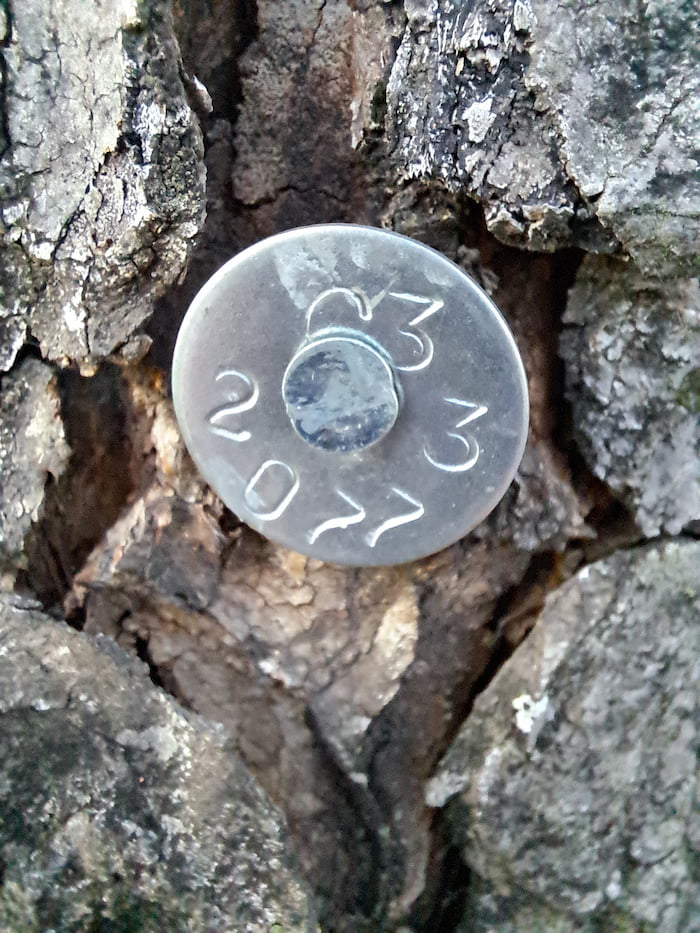
Washer tag with identification markings
An example of a similar campaign is the promotion by the Hoedspruit-based organisation Elephants Alive, which in 2021 published its own mitigation methods. These included a similar wire mesh project and using beehives, rocks, and even chilli oil to mitigate the impact of elephants.
The study at Singita is based on research done in West Africa and the Associated Private Nature Reserves (APNR). Still, it is unique in the level of data being collected and the location in a different region. The team also hopes for an MSc proposal on the tree project by SLT Biodiversity Researcher Ben Nicol.
Singita celebrates its 30th anniversary this year, with a long history in ecotourism and conservation. This extends across the four regions in which it operates. In addition to South Africa (Sabi Sand and Kruger National Park), these include Zimbabwe, Tanzania (Serengeti), and most recently, Rwanda (Volcanoes National Park).
The main image: Adriaan Buys. All other photos are by the author.

